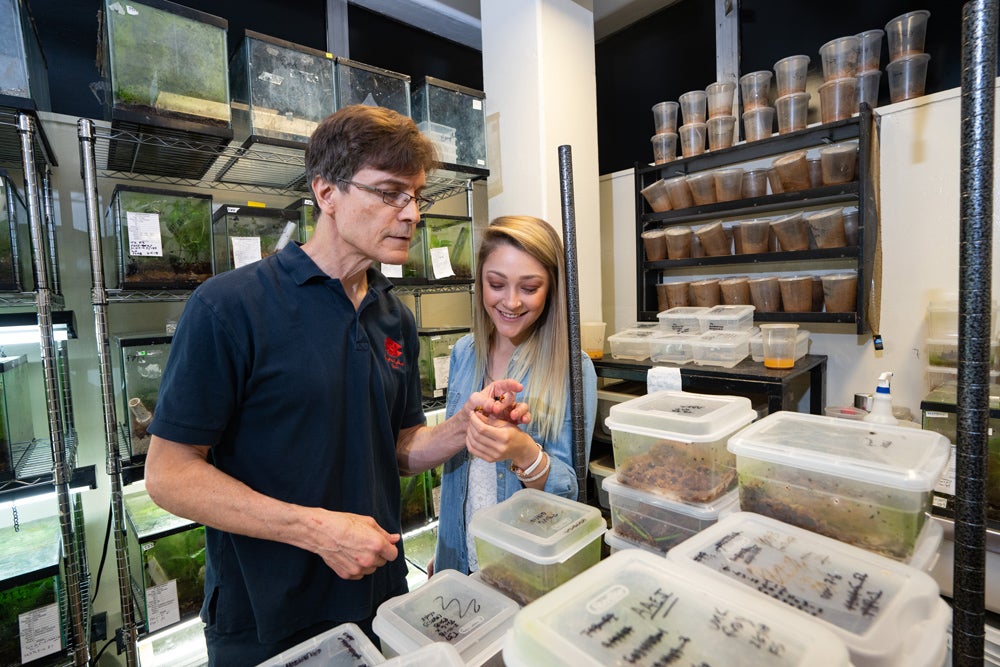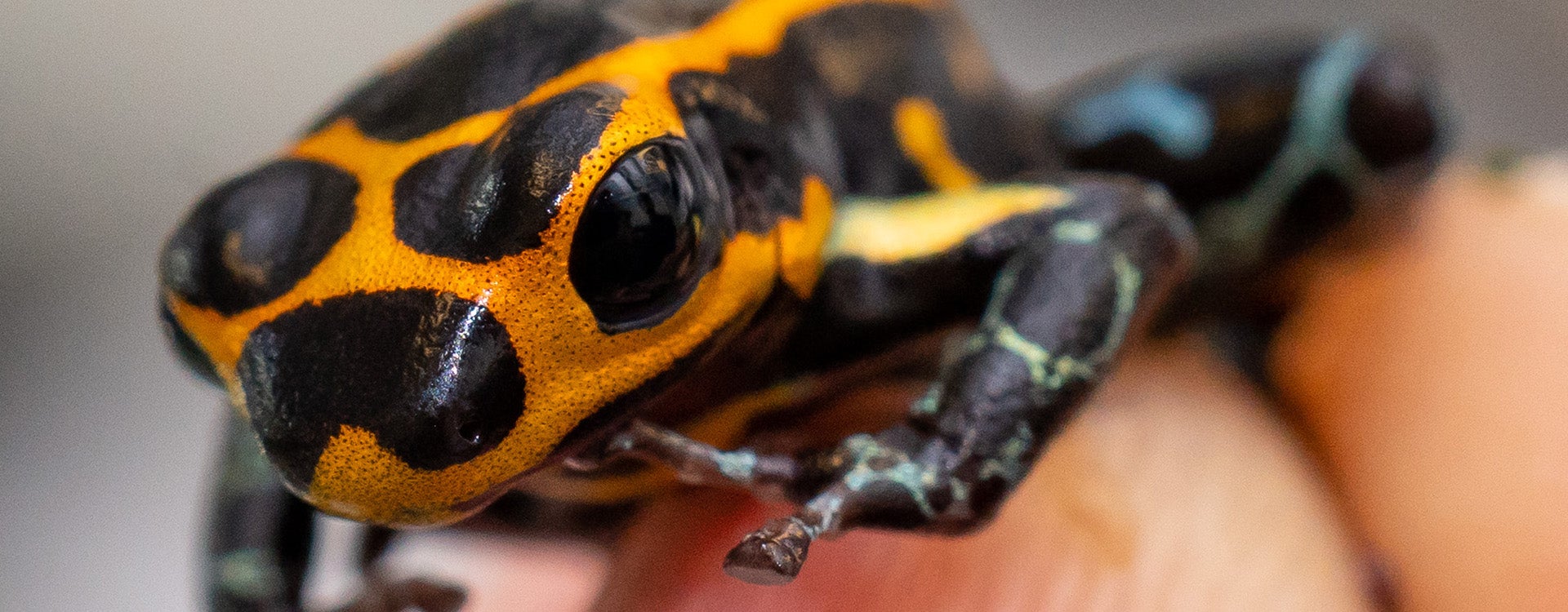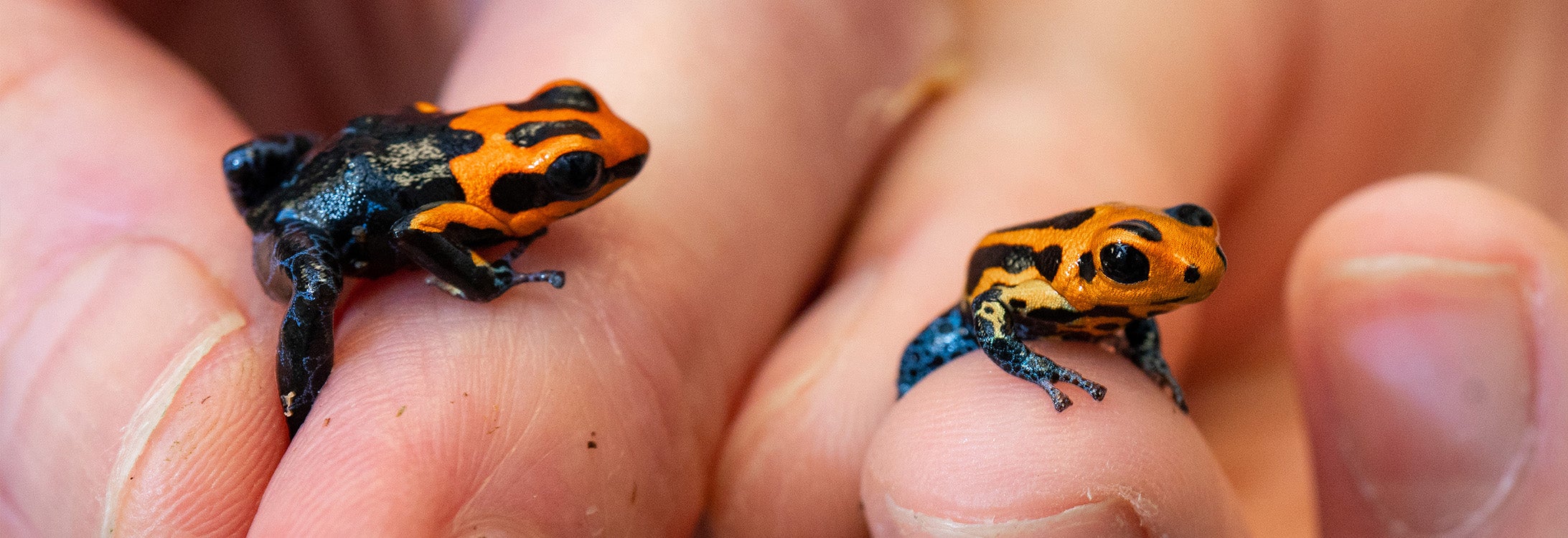TESTING FOR MONOGAMY?
ECU researcher explores DNA behind mating systems
An East Carolina University faculty member is part of an international research team that may one day lead humans to use biology – not body chemistry – to find their next mate.
Kyle Summers, a biology professor in ECU’s Thomas Harriot College of Arts and Sciences, and researchers from 10 other universities are cracking the code of relationship genetics. The team has found a collective group of 24 genes that could account for monogamy and biparental care across multiple vertebrate species.

Summers and undergraduate researcher Mikayla Johnson examine frogs in Summers’ lab.
In the cover story of the Jan. 22 edition of the Proceedings of the National Academy of Sciences of the United States of America (PNAS), the team details its method of gene comparison between male species of poison dart frogs, mice, voles, songbirds and cichlid fish.
The sequencing technique used begins by extracting ribonuclelic acid – or RNA – that carries instructions from DNA required for protein synthesis. The RNA expressed in the brain tissue of the five species was then converted to DNA and sequenced to compare genes between monogamous mating pairs and promiscuous mates in each species.
The monogamous mating pairs’ genes were then compared across species to examine whether there were similar genetic markers between vastly different organisms.
Despite their research findings focusing on frogs, fish, small rodents and songbirds, the team’s results may have an effect on future human dating habits.
“What we found is that there seem to be sets of genes that are reliably associated with the differences between monogamous and promiscuous species across these distantly related animals,” Summers said. “This was a novel finding and it suggests that there are conserved sets of genes that can be switched on, or can evolve to be expressed at higher levels, when species have an evolutionary change that shifts them from promiscuous to monogamous mating systems.”
In terms of mating systems among primates, humans are highly monogamous compared to other species. Summers hypothesized that like the vertebrate species in the study, human DNA may express the same type of monogamous-related genetic markers despite millions of years of divergent evolution between these species.
However, Summers said it’s still too soon to tell whether daters will be able to swab a potential mate’s cheek to find out whether they have the genetic makeup of a cheater or a faithful companion.
“It may be testable in the future,” Summers said. “It’s a long way down the road. Whether there are individual variations in human populations that account for a higher level of monogamy isn’t clear at this time.
“It might be possible,” he said. “We’ll have to see where future research takes us.”
According to the MIT Technology Review, more than 26 million consumers added their DNA to the top four leading commercial ancestry databases by February 2019. That number is expected to grow to 100 million within the next two years.
In 2014, Vancouver-based startup DNA Romance launched, offering customers the chance to find love through DNA analysis. Since then, the DNA-dating space has grown to include competitors Pheramor, GenePartner and Instant Chemistry.
While consumers contemplate the pros and cons of relying on hard science instead of their gut feelings to fall in love, Summers said his research will continue to explore the genetics associated with parenting in the poison dart frog species he’s studied over the past 30 years.
“My collaborators and I have been focused on looking in more detail at the gene expression of the brain and its association with mating systems,” Summers said. “Especially in the poison dart frog, there are so many different patterns of mating systems, whether its biparental care, male-only parental care, or female-only care. We still have a lot to learn that can maybe one day explain why and how we evolved the way we have.”
Learn more about Summers and his work online.

Summers said his research will continue to explore the genetics associated with parenting in the poison dart frog species he’s studied over the past 30 years.
